For a blog, ostensibly written about the development of a small holding in a mountainous area in the south eastern corner of Australia, I rarely write about the plants and growing conditions. The internet is full of people creating content about living their best life on the land, and wow, how easy it is for them etc. I’m not that person, and I recount the weekly stories as they appear to me. A reader gets to enjoy the good, the bad, and the ugly.
The weekly blog commenced almost ten years ago now. I’d written for the hippy press for well over a decade beforehand. Eventually that source of creative hippy writing just quietly faded. Printed publications died a slow death in the face of free internet content. That’s progress for you. All the same, it amuses me greatly to ponder the social contradictions of working at the top end of town during the weekdays, and writing for the hippy press on the weekends, but that’s what happened. Turns out I just enjoyed the act of writing.
There’s a lot to learn about the art of writing. Recently I re-read the essay penned about my old mate Mike. Long term readers will recall that he died of a heart condition during the health subject which dare not be named. The read was both sad and enjoyable all at the same time. During the re-read, it was a bit hard to stop myself from noticing that the essay would be improved if that bit here was altered, and then oooh, I could make this adjustment to the words over there. Writing is like gardening, you get better at those learned arts with practice.
Woe is me though, the earliest essays penned over two decades ago still reside in printed copies of the publications stored in the floor to ceiling bookshelves lining the hallway. Dare they ever be revisited? Back in the day, the magazine publisher would send me a cheque for the essay, and also a complimentary copy of the publication. Fun times. On an interesting side note, if the banks have their way, which appears to be the case, cheques as a payment method will soon be discontinued. The death of the magazines preceded the demise of cheques long ago. That’s progress for you.
Without daring to look at the ancient publications, I’m guessing the earliest essays were kind of like the first vegetable garden we planted out in our inner urban terrace house. The fashionable advice in those days was to mulch everything within sight. So with that first garden we applied lots of mulch to the soil, only to watch all of the plants die. In addition to killing a whole bunch of purchased seedlings, we manage to upset all of the neighbours by digging up the front garden and planting it out to vegetables. Gardening advice rarely tells you such useful information like: how not to upset the entire neighbourhood.
However, with repeated practice, you do learn and eventually get better at all this stuff. Nowadays I can upset a much bigger audience via the internet. You also learn to sort the proverbial wheat advice from the chaff advice. Earnest folks may tell you that adding mulch to soil is all you ever need do, but my experience is that the methodology doesn’t work here. As a novice grower you have to learn the hard way.
Summer officially ended a few days ago. Walking around the property earlier today, observing the orchards, vegetables, berries etc. , the plants look a bit on the drier side of things. For those who are mathematically inclined, or just appreciate a solid graph, here is a representation of the rainfall for during the three months of summer.

The majority of the rain fell during the first half of summer. From then onwards, it barely rained at all. There have been quite a few hot days. Such variable climactic conditions have occurred most of the years we’ve lived here. It really is hard to know what to expect from the climate from one year to the next. The practical application of this lesson is that: it’s complicated growing edible plants here. So I don’t really write about the subject mostly because what we’ve learned is locally applicable knowledge.
To counter the variability, we’re doing plenty of things in the background. Trialling different growing methods and plants just for one example. Some things work, some don’t, but always we learn. And what we’ve gleaned over the years is really local knowledge.
One matter which is probably widely applicable across the planet is to continue feeding the soils. If you want to grow edible produce, you have to feed the soils. Even the ancients knew this. Right across the planet, the soil fertility is going (if not already gone) the way of paid publications and cheques. Every second meal, anywhere, is reliant on fertilisers and minerals derived from fossil fuels. When I read articles written by earnest people suggesting civilisation wean itself off fossil fuels, I can only imagine that the people making such demands know nothing. They won’t like it, but all the same at some point in the future it will happen, and in fact already is.
To improve the soil fertility and available minerals for the plants, we use whatever we can get. What other people do in that regard, is something of a mystery. I suspect that they like adding mulch because it is cheap. You can’t grow vegetables in the stuff though.

The above photo shows one weeks worth of used coffee grounds from a café in Melbourne. I’ve been collecting the stuff from them for over a decade. For them it is a waste product which costs them serious mad cash to dispose in landfill. For me it is something which contains all manner of useful soil minerals. Everyone wins. But it can’t be used as-is on gardens, or not in any great quantity. I add agricultural lime and wood ash to the coffee ground mixture. Sometimes gypsum and/or blood and bone meal gets chucked in, but all the same, it’s potent soil feed stuff.
Very observant readers will note that in the above photo the dog Ollie is standing on some sort of white crushed rock. All the paths are lined with this stuff. A lot has been brought in over the past decade and a bit. It’s hard not to notice that the fruit trees near any of the paths grow faster, stronger, produce more and are healthier than those further away. The trees are literally eating the paths. Again, such things are local knowledge, and not widely applicable. So I don’t write about that.

We’re not purists either, and sometimes we can be a bit slack about the finer details of growing plants. Proper and regimented plant spacing is not something we’re very good at. So generally not wanting to field comments full of helpful corrective advice, I don’t write about that either.
What I do write about is: what we are doing. And I’m cool about that.
Here’s a sample of some of the produce we’ve been harvesting over the past week:
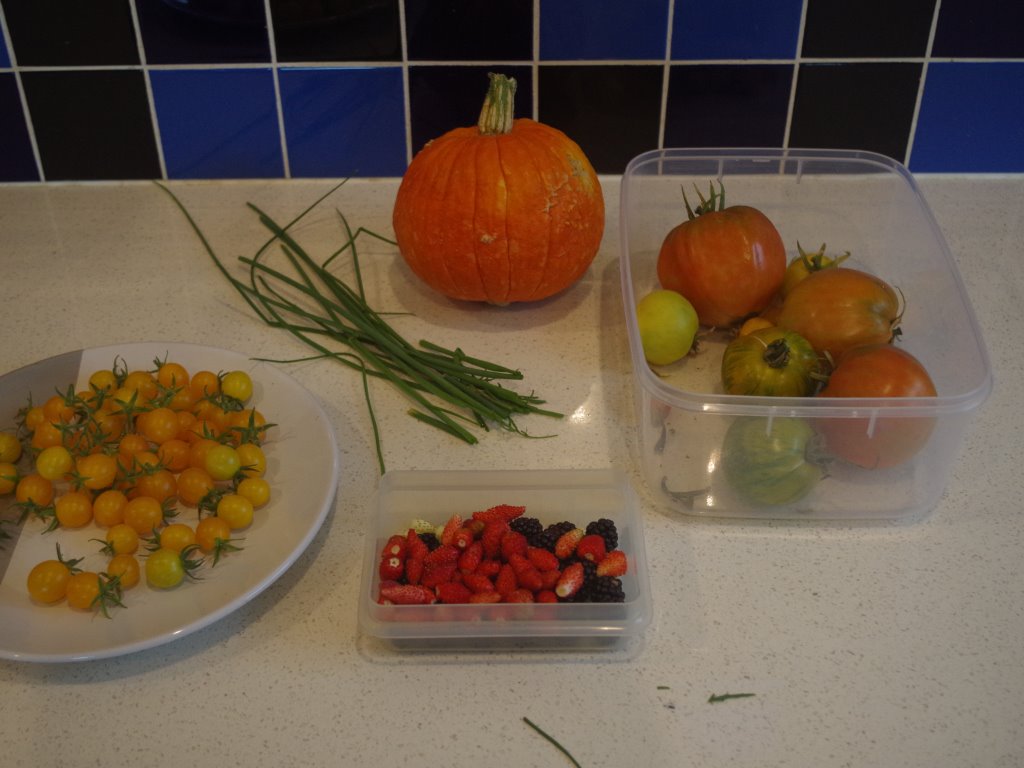
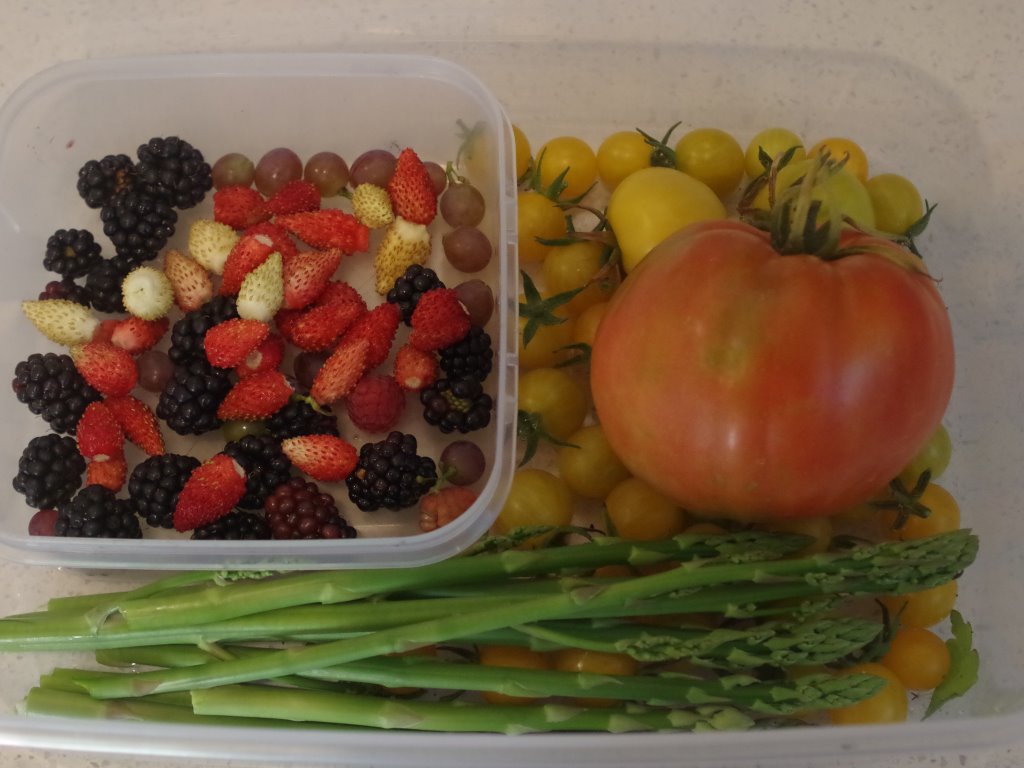
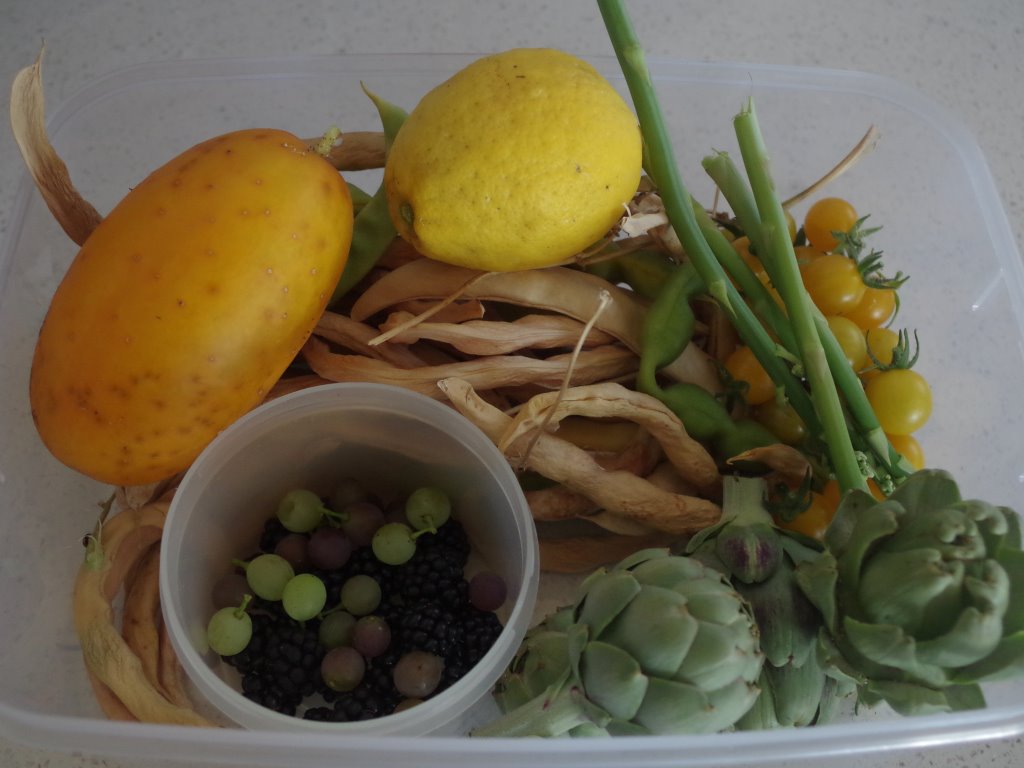
When citrus trees become well established here, they produce a lot of fruit during the cooler months of the year. Recently we’ve planted out a dozen or more additional varieties of citrus tree, but they’re still many years away from producing a decent harvest. You have to start somewhere though.

We grow a number of different varieties of nut trees. Their production is as variable as the climate. But you always seem to get something. This year is good for chestnuts.

Some edible plants just need to grow for a lot of years before they produce anything. Fruit trees are a real investment in the future. This year the grape vines are about five years old, and they are now producing clusters of yummy table/wine grapes.
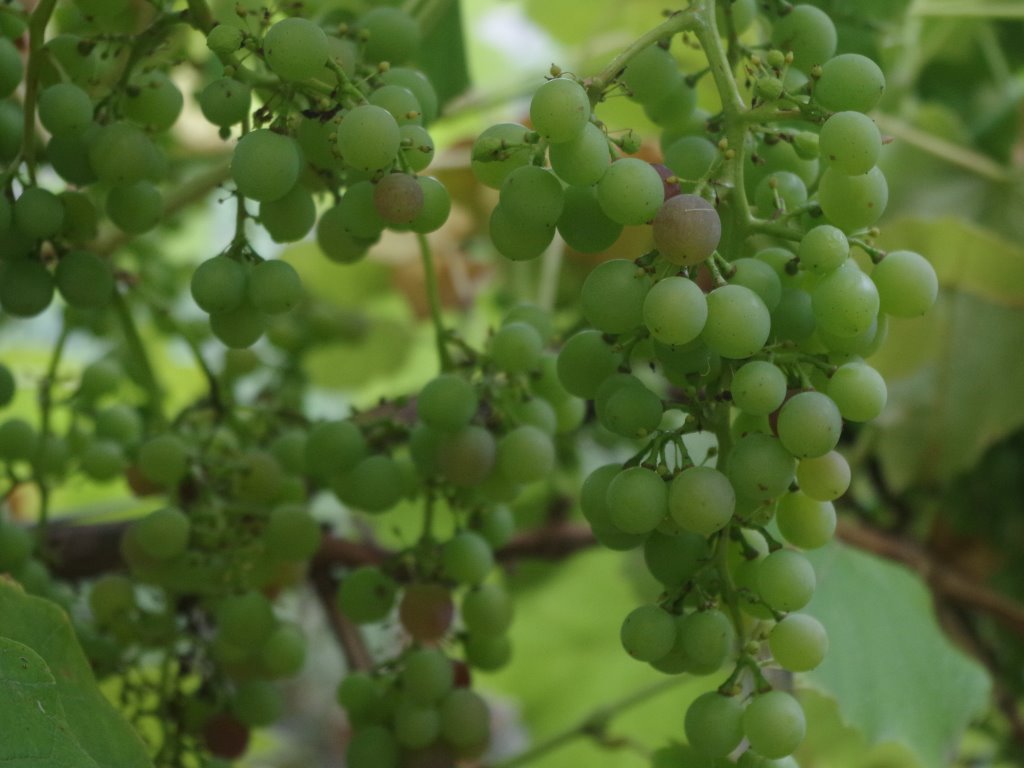
We plant a diversity of edibles so that there is a very long harvest. The multitude of kiwi fruit won’t be ready to pick and eat until almost the winter solstice.
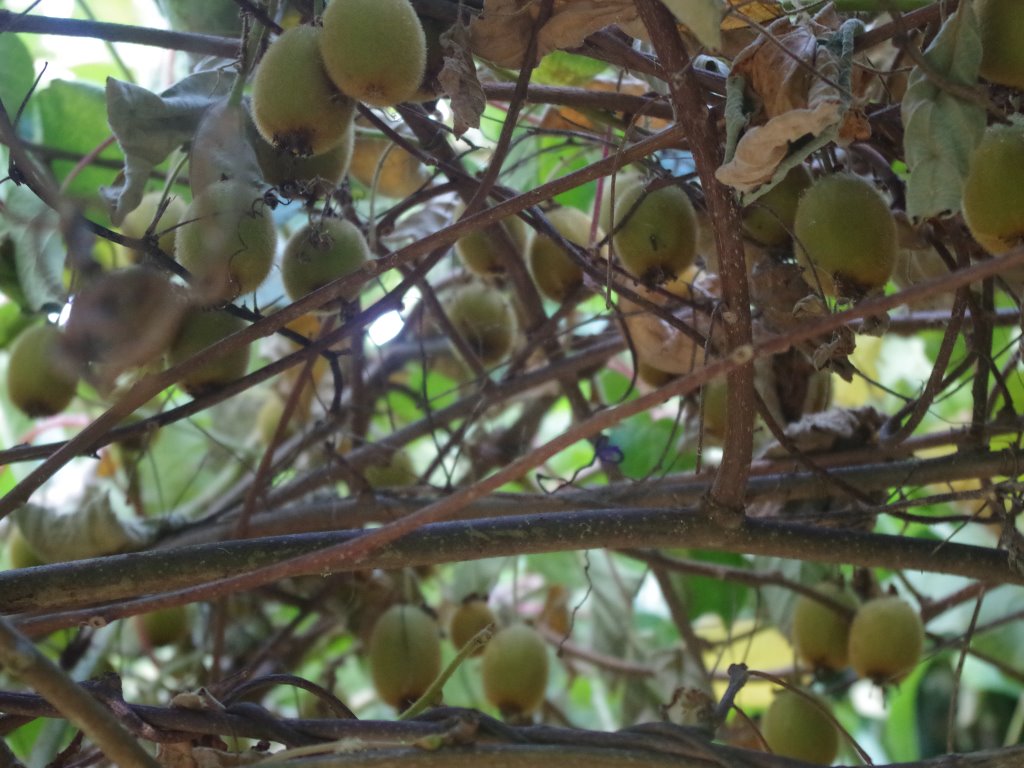
You never know either, many plants can do nothing for years, then suddenly one day they’ll begin producing. The hops vines have decided that this year they’ll produce hops flowers.

Autumn is officially here. Most mornings, cool and humid air collects in the valley below the mountain range. Bizarrely the average temperature is a bit less extreme at elevation.
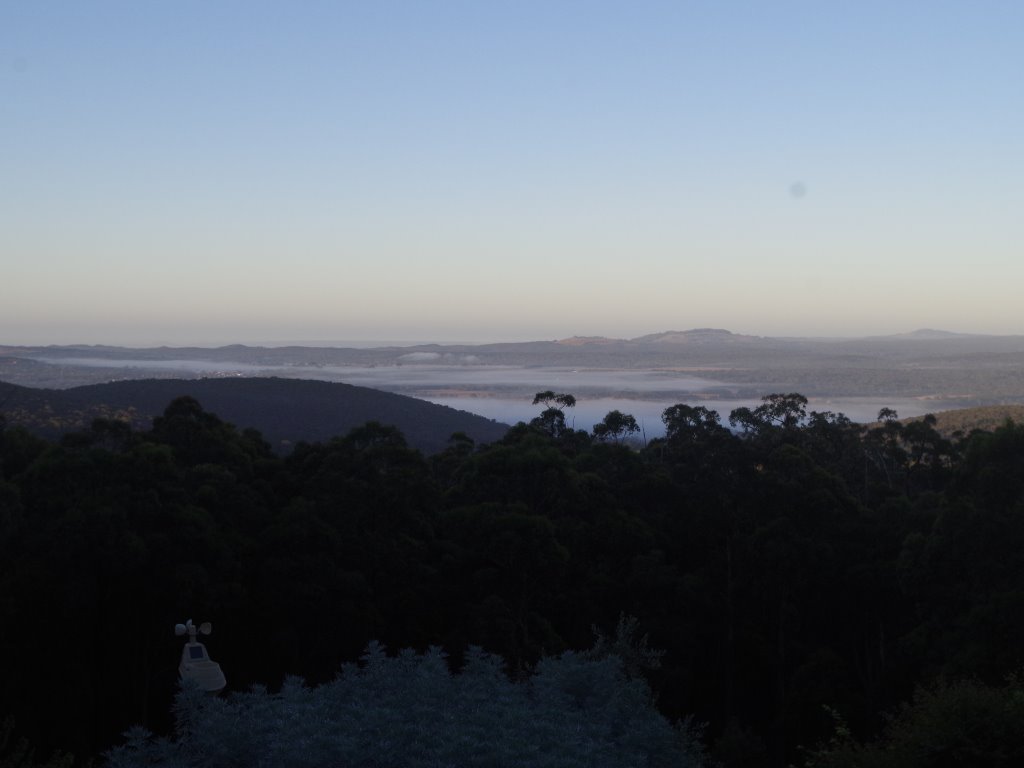
Some of the trees are beginning to turn deciduous and you can see the colours of the leaves changing.

During a day off work, we headed north to visit the goldfield ruins. It’s only an hours drive north, and the area is fascinating. During one self guided walk we were alerted to an Indigenous well.
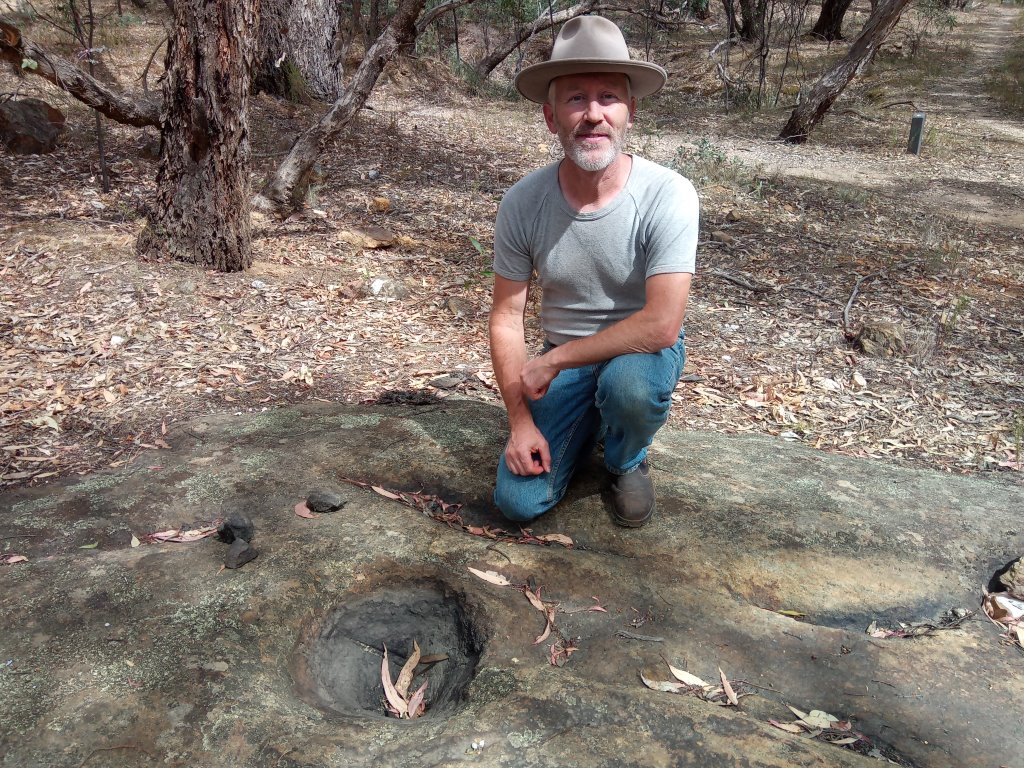
The well in the rock (granite and non porous) had been carved over a long period of time. It used to be covered so that the water was protected from animals and contamination.
In the area was a vertical mineshaft which dropped down 150m / 500ft, and some cheeky scamp had cut the steel mesh which presumably stops people from falling down the shaft. Makes a nervous person wonder what’s down there at the bottom that they needed to do that…
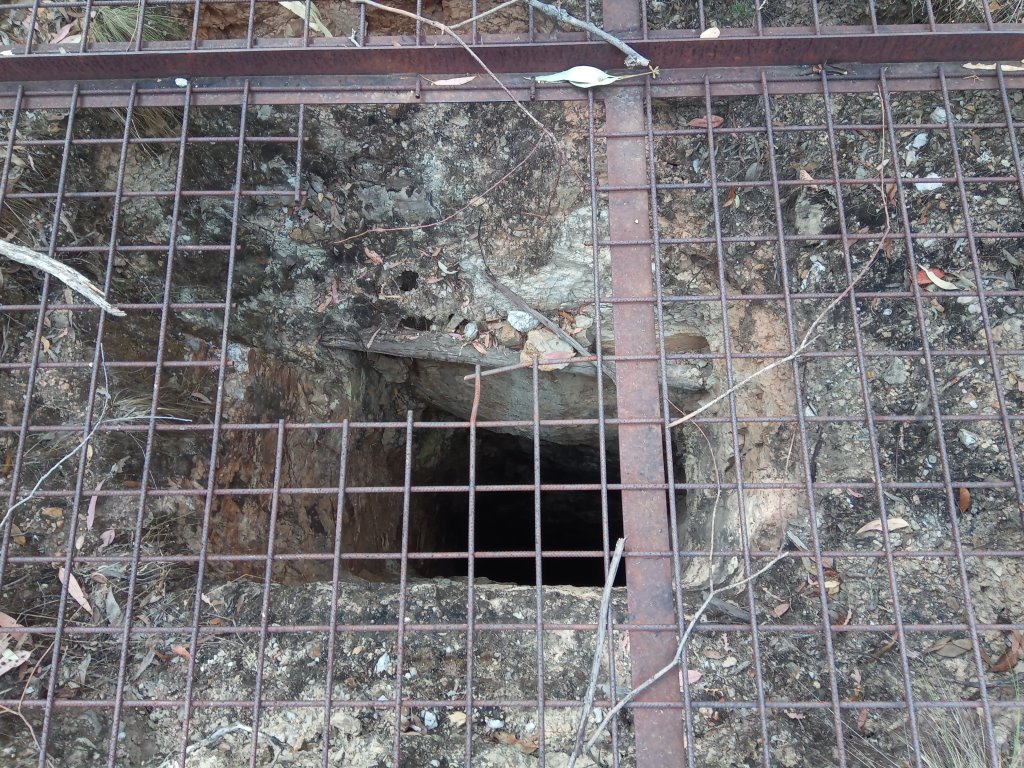
Throughout the dry forest, which had been totally cleared back in the mining days for fuel and building lumber, there are the remains of many stone buildings. Presumably the dressed stone has been stolen over the intervening years. A fascinating area which always makes me wonder what artefacts will civilisation leave to the future. Some of the trees in the next photo are over a century old.

Speaking of stones and rocks and stuff, we continued to fill the latest steel rock gabion cage (locally sourced rocks of course!)
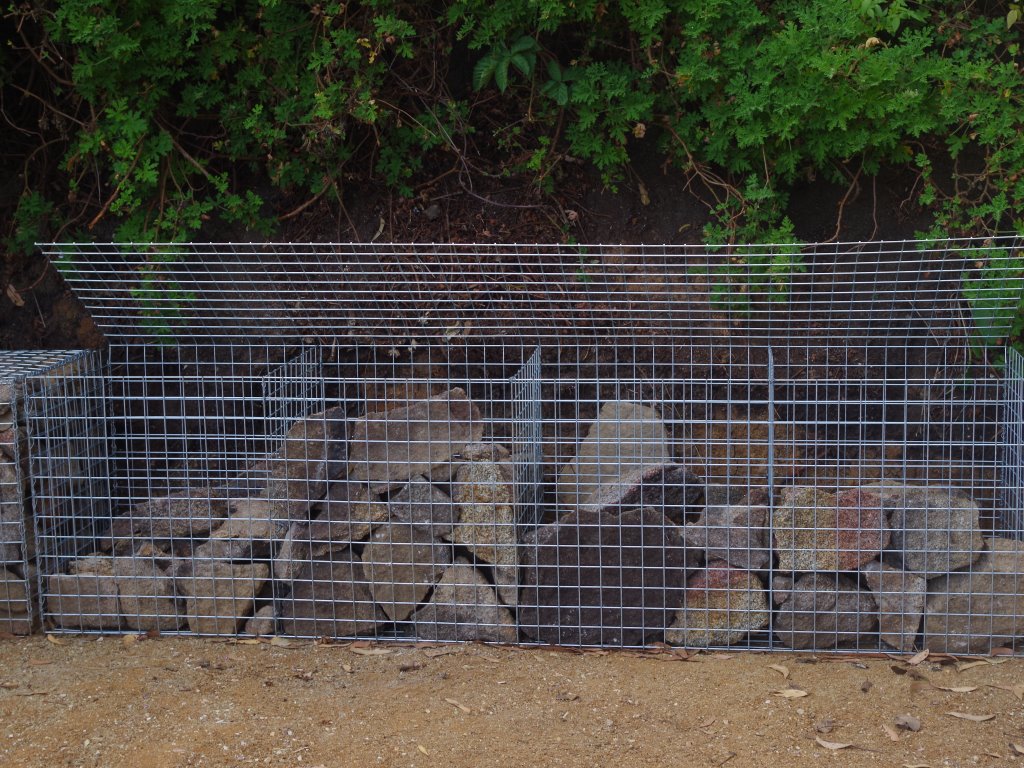
Near to where the steel rock gabion cage is located, we are excavating a flat site for a new and larger firewood shed. Two 12V electrical cables and some pipes travel underground through that area and all had to be removed.
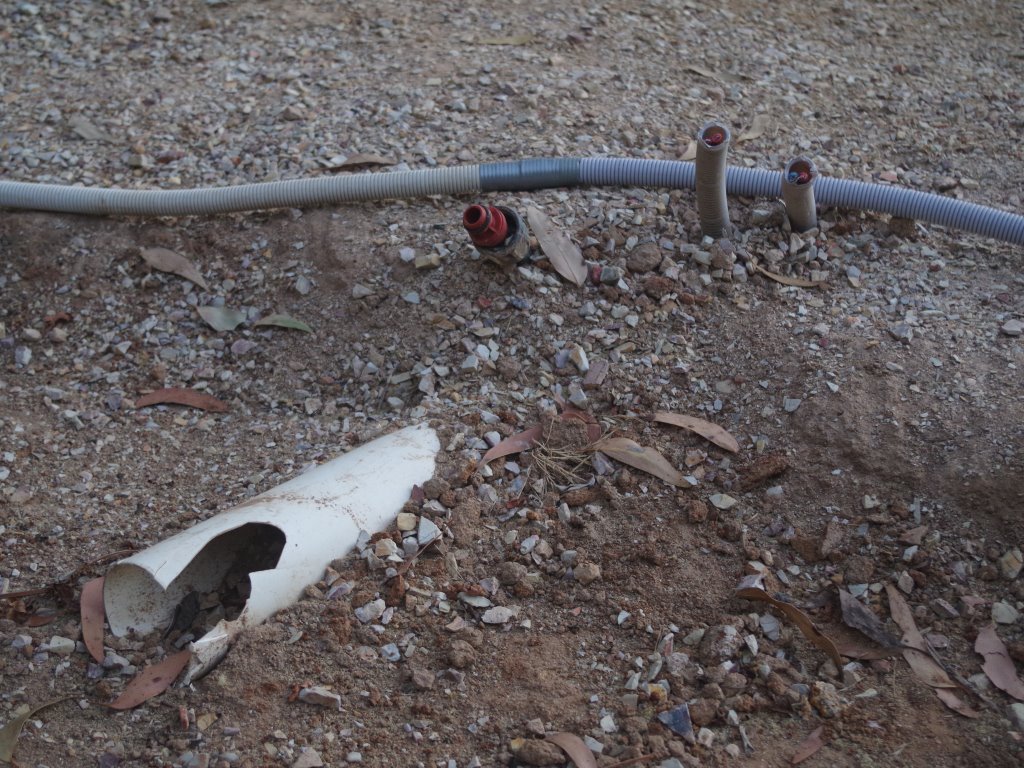
That 12V solar power system is old and has been in use since before the house was even constructed. It needed refreshing, so we re-wired all of the connections and added in three layers of circuit protection i.e. fuses. It pays to be careful with this stuff, even when it is such low voltage.
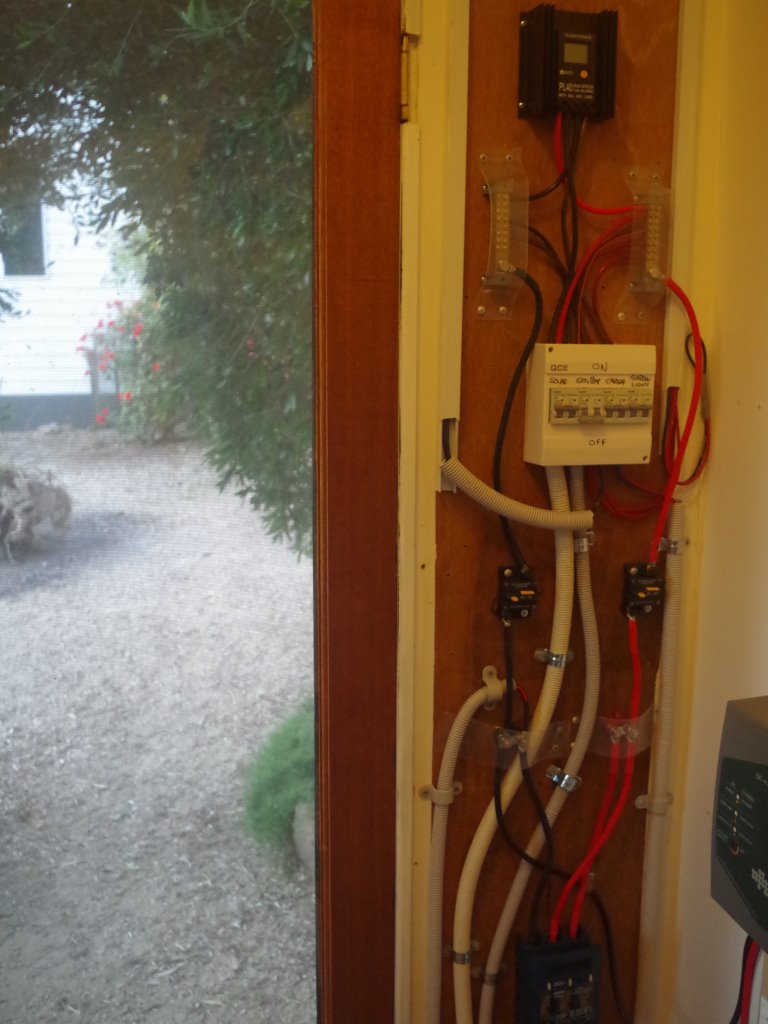
Work also continued on the rock wall for the low gradient path leading to the formerly rat infested shed. The first rock layer is now complete.

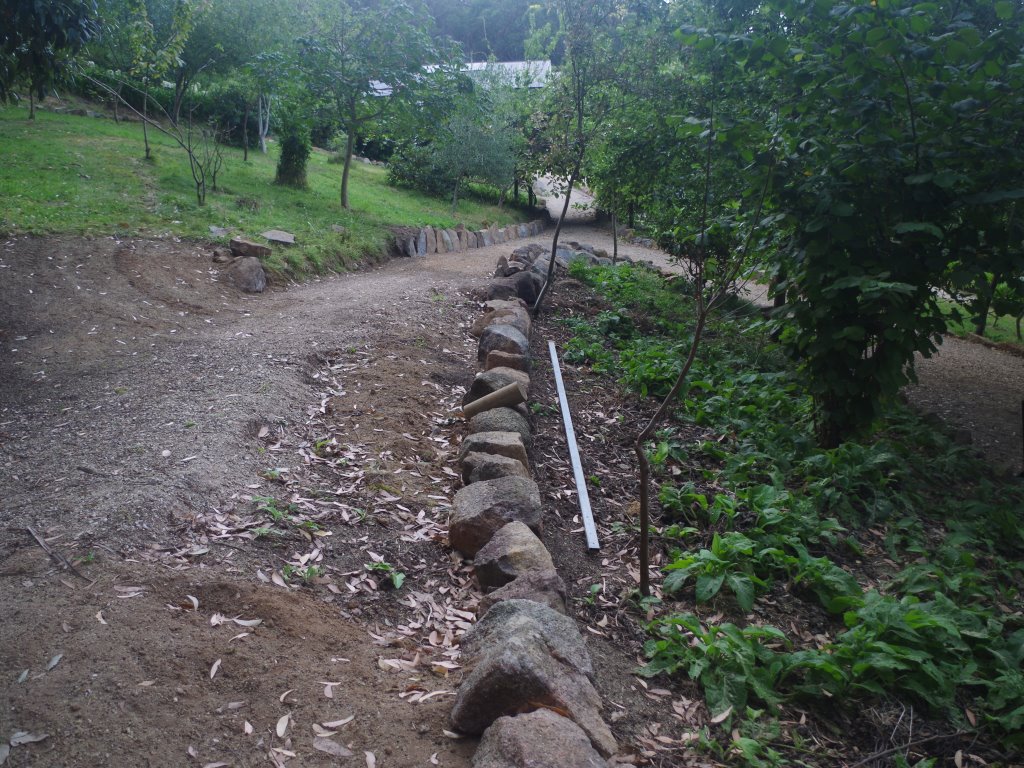
Been busy this week…
Onto the flowers:
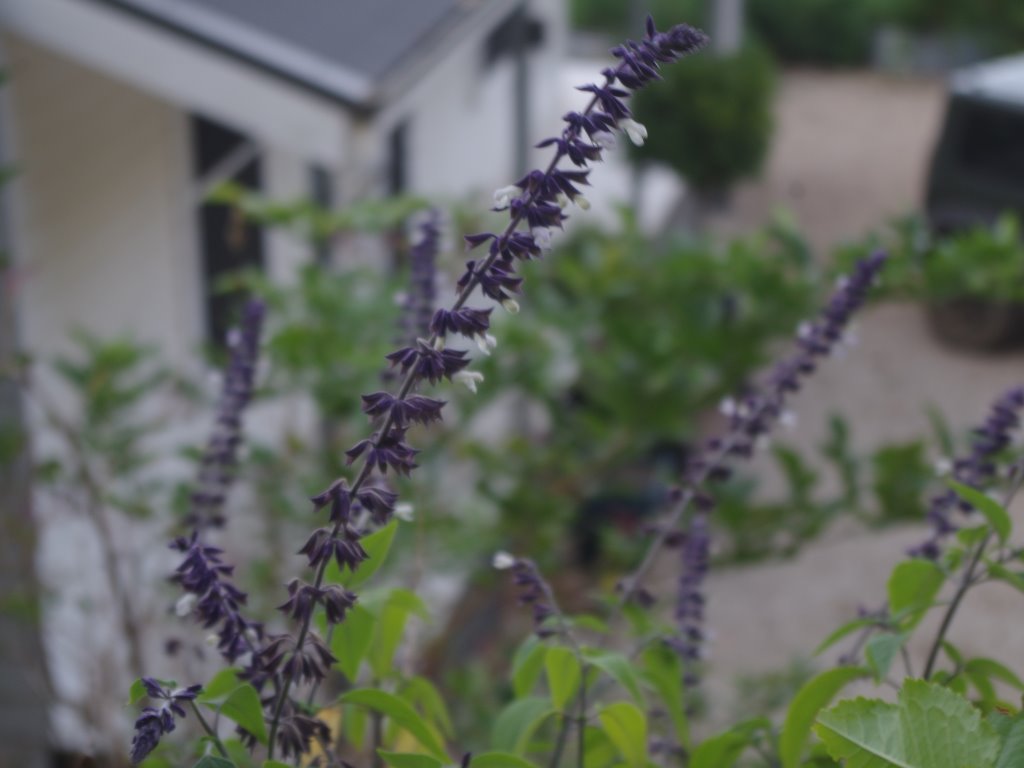
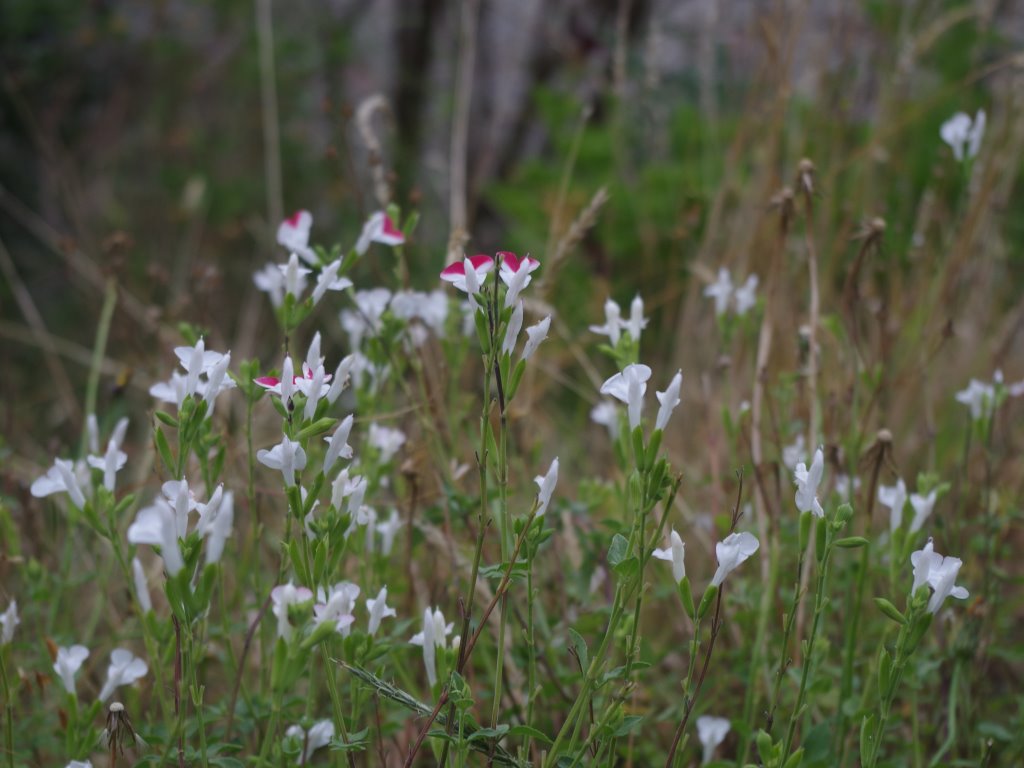
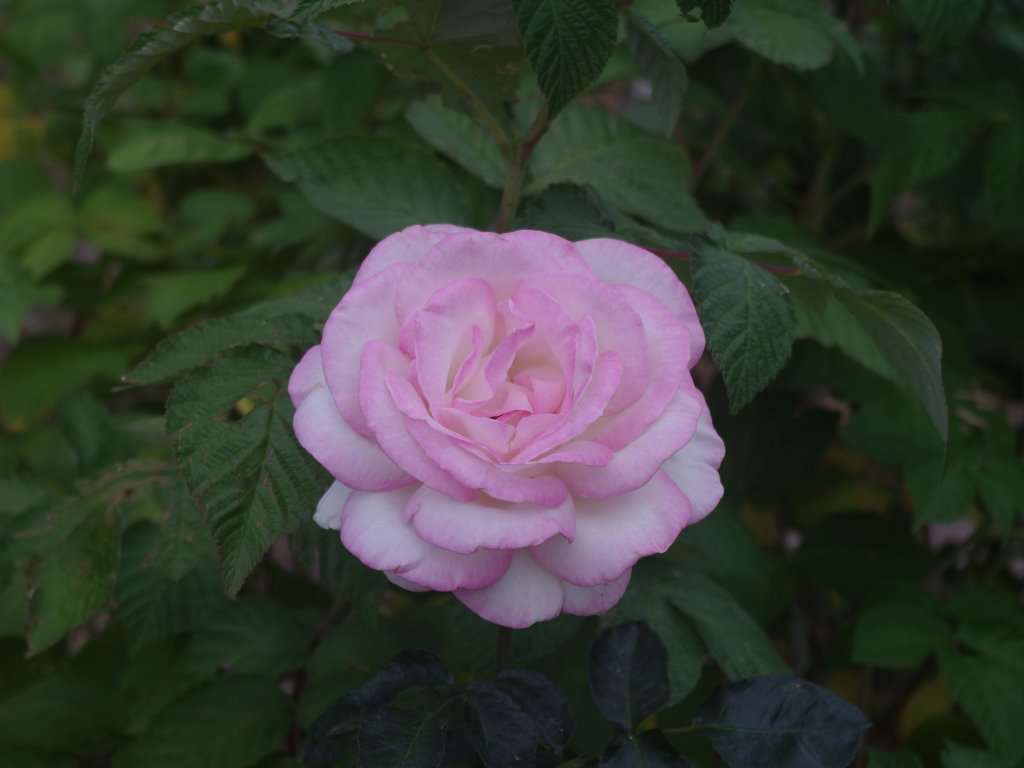
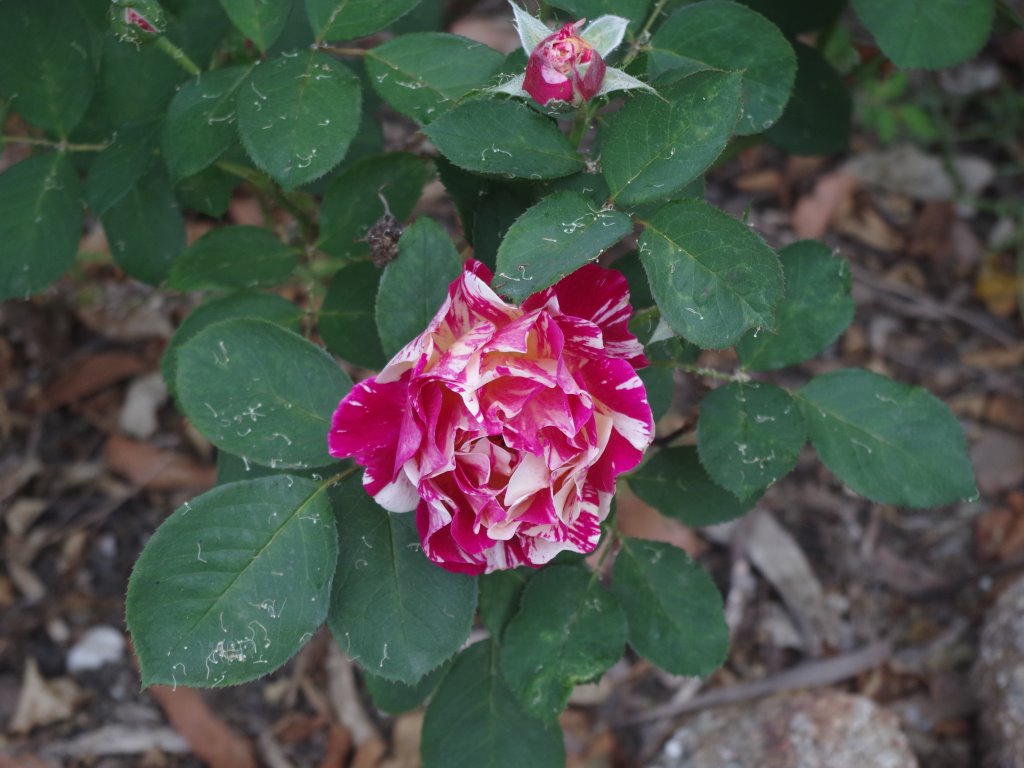
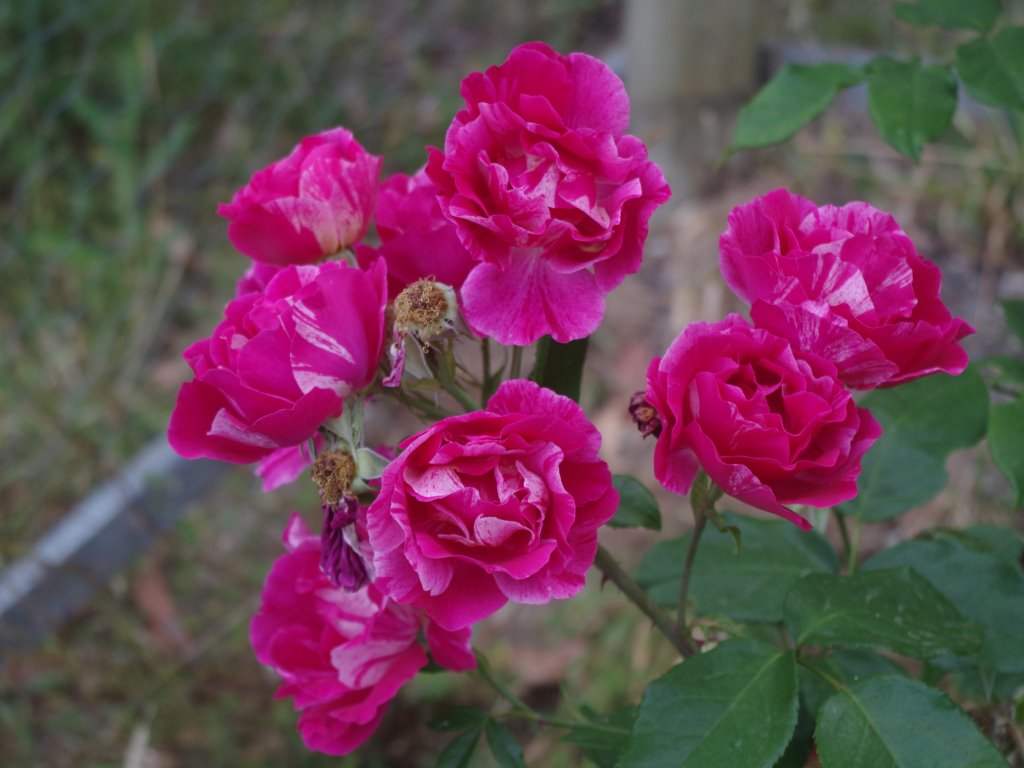
The temperature outside now at about 10am is 10’C (50’F). So far for last year there has been 211.2mm (8.3 inches) which is up from last weeks total of 210.8mm (8.3 inches)
